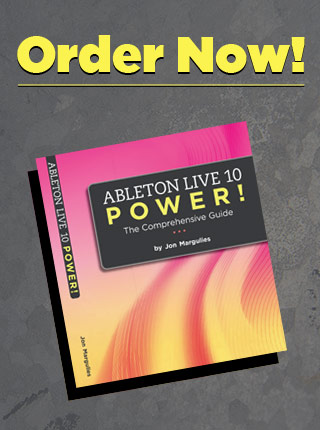For those of you out there who aren’t masters of Live’s signal routing, I’m going to take a moment to break down how you create a bus track like the Sample Bus that I talked about in the last tip. In this case, the term bus refers to a track that is used to combine […]
AMP & CABINET ON THE JUNKY BUS
I like the drums I’ve programmed for this remix I’m working on, but they just sound too polite. One of my favorite ways to add some nasty to the drums is with a little amp and cabinet action. In the past, I’ve used actual re-amping and NI Guitar Rig to handle this chore. Today, it’s […]
AMP & CABINET ON THE JUNKY BUS, pt. 2
My junky drum bus already sounds pretty cool, but it needs a little Amp for grit. It’s placed after the Rough Rider (and before Cabinet): I settled on the Rock model by ear and turned the Bass and Treble all the way down – the aggression I’m looking for is all in the midrange. Like […]
THE JUNKY BUS, IN SPACE!
In the prior tips, I mentioned using Dual mode to preserve the stereo image of the drum group. In fact, what I ended up doing was exaggerating the stereo image using a Simple Delay after Cabinet: (tip continues below) ~*~*~*~*~*~*~ Hot Tip: Visiting the Shop supports this website. ~*~*~*~*~*~*~ If you’re not familiar with this […]
PRINT THE RETURN
Now that I’ve added some satisfying junk to my drum sound, I’m going to render the processed signal to an audio file. (I’ll discuss why in a moment.) Remember that all of the processing from the prior tips is happening in Return A: To Print Return A to an audio file, open up the Export […]
GROUP IN A GROUP
Every now and then you’ll bump into the problem that you can’t have a Group track within a Group track (the way you can nest Racks within each other). For example, you might want to group a set of keyboard parts together, but one of the parts is made up of two tracks you’ve layered […]
KEY MAP TO A/B
When mixing, it’s really nice how easy Live makes it to A/B different effect settings or configurations – even when spread across multiple tracks. For example, earlier today I wanted to compare two different EQ settings on a layerd bass part. I wanted to hear what it sounded like to boost the lows in […]
EQ: CHECK THE GAIN
A simple but useful feature of Live’s EQ 8 is the Gain control: It’s just a simple volume control, but it comes in handy for A/B-ing your EQ setups. If you’re making an EQ adjustment that raises or lowers the volume of a signal noticeably, you can cut or boost the gain a return the […]
GET THE GAIN RIGHT (ALL THE TIME!)
Whenever you’re processing a signal in a way that changes it’s gain (whether you’re doing it with EQ, compression, distortion, etc.) the only way to really hear what the processor is doing is to match the volumes of the processed and unprocessed signals. The reason for this is a principle well known to any experienced […]
BEWARE THE MAKEUP!
Unless you’re already a master of compression, beware of the Makeup switch. What it does is automatically apply “makeup gain” to the signal. As the Threshold and Ratio are adjusted, the compressor determines how much gain reduction it is applying and then raises the output signal up by that amount. This may seem totally counter-intuitive, […]





